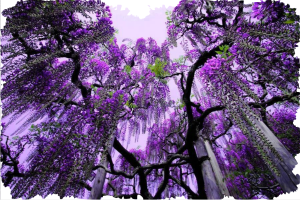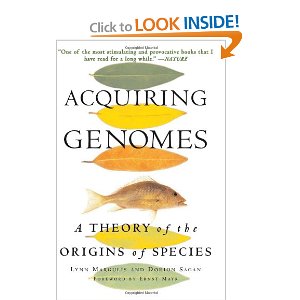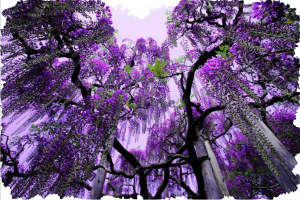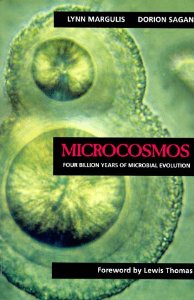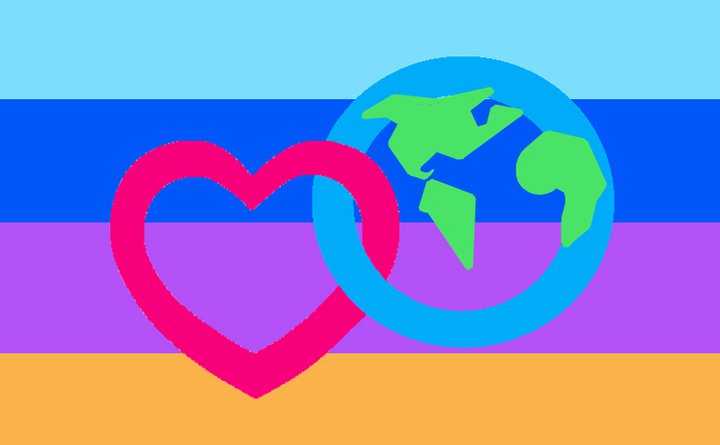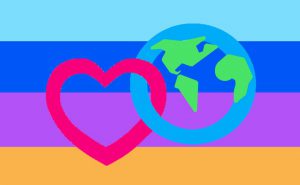Dear Earthlings:
The EcoSex course at U Conn is in process. It’s a great experience. We are expanding horizons with clustered reading: Theory of Science, Cultural Theory, Ecological Theory. We each read related books, then report to group. More thinking out of the box and across disciplines. Students are sending their book reports in. In class, we connect the dots. From a holograph of what we’ve read together, the “required readings.” What’s the connection with our clustered themes? Multiple perspectives and good synergy. Here, we offer a glimpse. Lynn Margulis and Dorion Sagan’s Microcosmos is one of two “Theory of Science” books. We got Michael to report on it.
Adam Kocurek:
A Book Report on Acquiring Genomes: A Theory of the Origins of the Species
by Lynn Margulis and Dorion Sagan
–>
“Acquiring Genomes”, by Lynn Margulis and Dorion Sagan, was a fascinating, if not at times a technically perplexing, polemical piece of scientific literature. I would expect nothing less from the authors of “Mystery Dance” and “Symbiotic Planet”; however, this book takes concepts discussed in each book, notably microbial significance, evolution, and Gaia Theory, and deeply expands upon their chief principles and misconceptions.
Margulis and Sagan make many provocative arguments throughout the book. One of the main points articulated in “Acquiring Genomes” is that evolution is so much more about symbiosis between organisms than competition, and that new species form through symbiogenesis, the merging of two separate organisms into one new organism, rather than propagation of random mutation, an exaggerated and rare factor. The book clearly states that natural selection cannot create, only perpetuate, and that mutations tend to lead to “sickness, death, and deficiencies” rather than a desirable modification; “mutation accumulation does not lead to new species or even to new organs and tissues”. The authors note that all organisms, not just bacteria, evolve through symbiogenesis, and provide many examples, some of which including cows, termites, lichen, glow-in-the-dark squid, and humans. I had known that there are more bacteria cells than human cells in our body, but I did not fully grasp the extent to which we, individually, are an ecosystem, a world harboring millions of organism which are as crucial to our survival as we are to theirs.
To better understand symbiogenesis and symbiosis, “Acquiring Genomes” takes a close look at bacteria, the common ancestor of all life on earth, which evolve, adapt, and develop by literally borrowing genomes from each other in a promiscuous frenzy, as they have done since time immemorial. Association leads to partnership, which leads to symbiosis, which leads to new organisms through symbiogenesis. This “acquiring of genomes”, Margulis and Sagan argue, is how life moved from the primordial stew of early Earth and became what it is today, all the while altering the very Earth itself.
With the appearance of ancient anoxic, photosynthesizing bacteria, the Earth transformed from a barren, nitrogen-rich wasteland into the Earth we recognize today. The oxygen-rich atmosphere, oceans, and a protective ozone layer are some of the most notable side effects of life. Even soil would not exist if it were not for intense biological activity; indeed, many sedimentary rocks even contain the fossilized remains of flora, fauna, and microbes that have been extinct for many million years. The Earth that we know now is teeming with life and, as Margulis and Sagan put it, is intrinsically very similar to an organism itself. The biosphere, Gaia, is a self-regulating system which, the authors argue, is the natural selector, keeping unchecked populations from over expanding and, through homeodynamics, keeps relative order and stability in the biota by not allowing large ‘gradients’ or ‘vacuums’ to occur using symbiosis, specialization, and ultimately evolution. Putting it plainly, there is an evident continuity between biology and physics in the biota; nature builds structures to reduce discrepancies. Gaia, as the natural selector, determines whether or not any beings live to reproduce, and the concept of ‘the individual’ is a myth. This way of thought is groundbreaking and remarkably fresh, unlike the dogma that has existed for centuries.
Another point that was made which I believe is tremendously important is that evolution happens relatively quickly. This goes against what Darwin and other great names said, that evolution is painfully slow and impossible to perceive on our time scale. Margulis and Sagan make the point that such ‘transitional’ beings are not neatly found in the fossil record, and that symbiogenesis can occur quickly, especially under duress, as seen in commonly in bacteria. Both suggest that the old understanding of evolution is, if not wrong, fragmented.
Margulis and Dorion also call to attention the turmoil within the scientific community that is not only hindering progression in all fields, but leads people to wrongly think that they understand evolution. Discrimination between scientific disciplines, as well as the isolation of different, yet intrinsically related fields of study like zoology, microbiology, and botany has led to a collective ignorance within the scientific world. For example, most evolutionary biologists tend to disregard microbes’ importance in evolution, focusing mainly on animals, particularly mammals, which constitute only one tenth of a million of all species living today, a minority among life. Most Evolutionary Biologists also use antiquated terms like “higher organism” and “mate competition” which are misleading and, the authors argue, should be abandoned. As an Evolutionary Biology/Ecology major, I found this conviction to be especially important and relevant. I plan to be aware of these points while reading scientific literature in the future.
Reading this book in an ecosexual mindset was not a difficult task. The emphasis on Gaia theory and interconnectedness between the Earth and all of its life seemed as if it could come straight from an Ecosexuality bible. Evolution is ultimately a science of connections, of give and take in order to survive and prosper. Indeed, the ecosexual mindset is beautifully congruent, if not identical, to the ‘mindset’ of bacteria and Gaia evolution. Now, more than ever, I see the Ecosexuality movement not as a radical strain of liberal thought (not that there is anything wrong with radical strains of liberal thought) but as a reversion to our true, natural selves, in harmony with nature. As beasts, essentially hairless primates, we are, at the core, no different to Gaia than bacteria, protists, fungi, plants, or the other animals. We are no more highly evolved, nor are we more significant. Margulis and Sagan make it clear that, in order for us to continue to function in the world we live in, we must get off our arrogant pedestal and work symbiotically with the world, which is something that I and Ecosexuality agree with.
Adam Kocurek
Published with permission
WGSS 3998 – Ecosexuality and the Ecology of Love
Prof. Serena Anderlini-D’Onofrio
U Conn, Storrs, Spring 2013
Dear Earthlings:
Let “nature” be your teacher in the arts of love. Education is the heart of democracy, education to love. Come back for more wonders: Book Reports to appear every other Thursday. Book Reports to be scheduled soon. Check out our summer offerings: Ecosexuality in Portland, OR, July 17-21. Registration here!
Namaste,
Serena Anderlini-D’Onofrio, PhD
Gilf Gaia Extraordinaire
Author of Gaia, Eros, and many other books about love
Professor of Humanities
University of Puerto Rico, Mayaguez
Follow us in the social media
Author’s Page/Lists all books:





http://polyplanet.blogspot.com
 The first topic I felt compelled to respond to is personal care products. I was shocked to learn about greenwashing, the false advertising surrounding “green” products in America. The book states that any product with an “infinitesimal” amount of natural ingredients is able to market themselves as natural or organic despite the rest of it’s ingredients. Thus, tricking consumers into buying said product. As I read on, I learned that in Europe there are laws against this phenomenon. Products are required to be at least 70{a9d64f7890d157e71e6efcce19e215a5f853c7f4151cde0b7bf7aada464173f6} composed of organic and natural substances in order to be marketed in such a way. This truly confused me and brought me to my first question. Why does Europe have these standards that we in America have no regards for? From the rest of the information in the section, it seems as if Europe is more conscious and proactive in it’s efforts for a green movement. As a matter of fact, Europe makes it look so easy to pass these laws that benefit their citizens. So why is it so challenging for us to do the same? Even if America started with banning false advertising, we would be on our way to saving the environment.
The first topic I felt compelled to respond to is personal care products. I was shocked to learn about greenwashing, the false advertising surrounding “green” products in America. The book states that any product with an “infinitesimal” amount of natural ingredients is able to market themselves as natural or organic despite the rest of it’s ingredients. Thus, tricking consumers into buying said product. As I read on, I learned that in Europe there are laws against this phenomenon. Products are required to be at least 70{a9d64f7890d157e71e6efcce19e215a5f853c7f4151cde0b7bf7aada464173f6} composed of organic and natural substances in order to be marketed in such a way. This truly confused me and brought me to my first question. Why does Europe have these standards that we in America have no regards for? From the rest of the information in the section, it seems as if Europe is more conscious and proactive in it’s efforts for a green movement. As a matter of fact, Europe makes it look so easy to pass these laws that benefit their citizens. So why is it so challenging for us to do the same? Even if America started with banning false advertising, we would be on our way to saving the environment.








